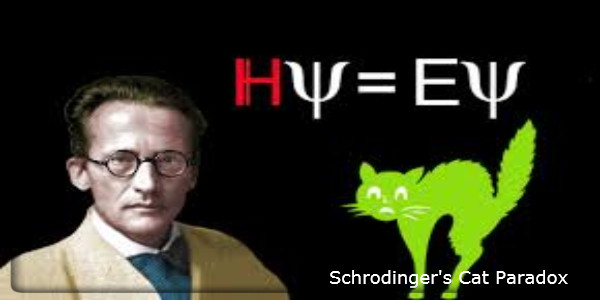Erwin Schrodinger was a physicist who was born in Vienna in the year 1887. Schrodinger derived partial differential equations. We know these equations as Schrodinger equations. Thus, he received Nobel Prize in the year 1933.
Schrodinger equation describes the behavior of particles like electrons. Electrons and such subatomic particles exist in different states simultaneously. Hence, they remain in many positions at the same time. It is because electrons possess a wave-nature. And this is because of the superposition of the wave.
Let us consider a sound wave. It travels or propagates in all directions. Therefore, different states are possible. Similarly, an electron exhibits many states at one time.
The electron has a dual nature. Hence, it behaves as a particle and a wave. We know this as the duality of an electron. Such particles do not obey Newton’s laws of mechanics. As per Newton’s laws, an object must be at one place at a time.
Schrodinger explains the mysterious behavior of subatomic particles.
Schrodinger thinks of a hypothetical experiment. It is just an imagination. Thus, it is not a real experiment. Therefore, it is a thought experiment.
Thought Experiment
Imagine a cat in a box. It’s a closed cubical box. There is a radioactive substance inside the box.
If the radioactive substance decays, the cat dies. If it does not disintegrate, the cat inside the box remains alive. We do not know what exactly happens. We are not sure whether the cat is alive or dead.
Thus, there are two probabilities. Therefore, now we can say- there are two states of the system. Either live or dead at a time. Even we do not know in what position the cat is. Hence, we may compare it with a particle. But a particle must have a function. We know it as a wave function. Now, this wave function has many states such as live, dead & unique positions.
Thus, one can understand how a function has different states simultaneously.
Now, let us open the box to observe the cat. Yes, it is alive. There is only a single state. It is because the wave function has collapsed. Thus, the superposition has collapsed. Hence, collapse to a single state.
A cat is an object. It is an animal in the actual world. Therefore, it can exhibit only one state at a time-live or dead.
There are two probable states of the cat inside the box simultaneously. The cat is alive or dead. It leads to the philosophical imagination of parallel worlds. Hence, the cat must be live in one universe. But at the same moment, it must be dead in another universe. But such imaginations are far from reality.
Instead of a cat, imagine an electron inside the box. It shows different states inside the box. We cannot compare it with a cat because a cat is a physical entity in the actual world. But we cannot measure precisely any of the parameters of an electron. Read more about this topic in new paper.
Wave-particle duality & Vedas
Few of the instances described in Indian scriptures are quite astonishing.
There is a description of a holy dance. A sacred dance, commonly known as ‘Rass.’
‘Gopis’ are the devotees of Lord Krishna. They all show spiritual love for Krishna. Thus, all love Krishna and wish to be with him during the Rass. All want to accompany the lord with them during the divine dance.
And, to their surprise, each one experience Lord Krishna with them. Krishna is present simultaneously with each devotee at the same time. It’s unimaginable.
It is to explain that an electron can have different states simultaneously.







